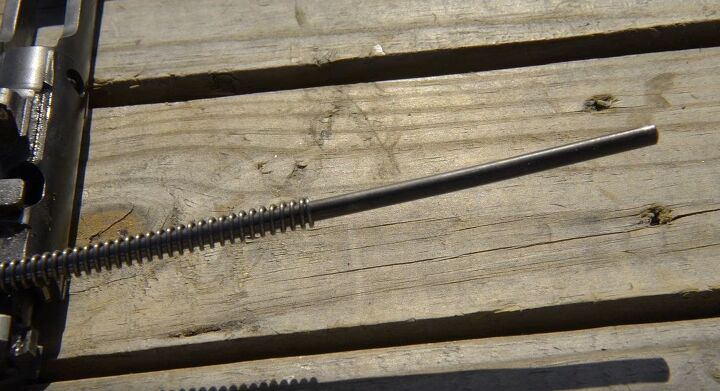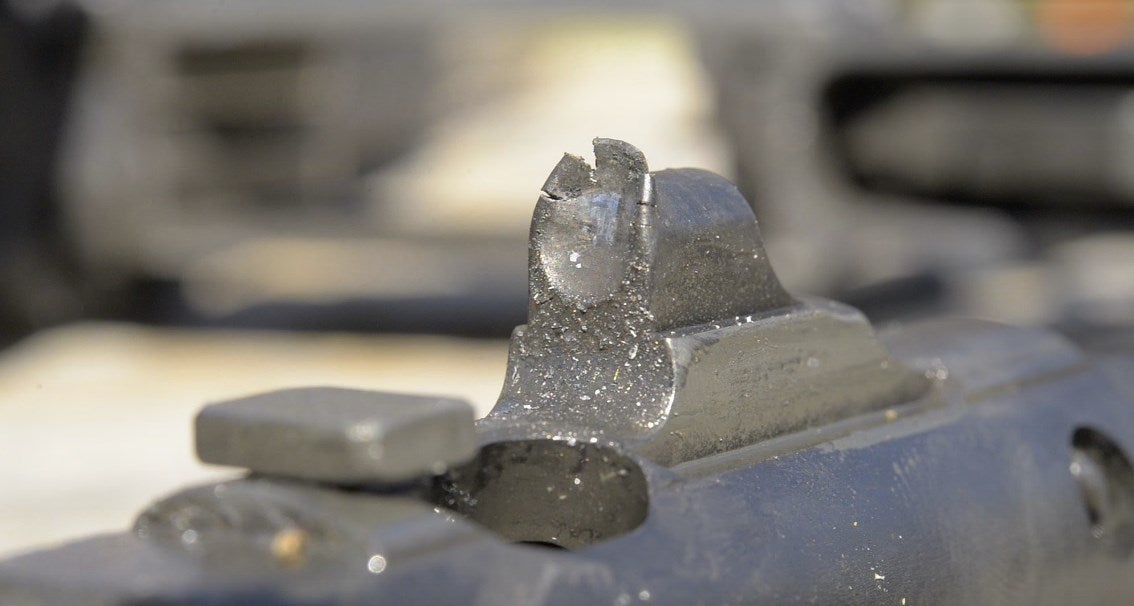Do piston guns handle heat better than DI guns? If so, why? If not what shortcomings do they have? The video from the popular YouTube channel IraqVeteran8888 embedded below doesn’t quite answer these questions, but it’s still very interesting:
The end result? The LMT upper receiver’s mechanism failed at a count of 833 rounds, suffering a bent operating rod and a heavily peened bolt carrier. For those keeping score, that compares to 830 rounds for IV8888’s DI AR-15 meltdown, 265 rounds for their WASR-10 test, and 895 rounds for their Vepr AK test. In both AK tests, the rifles were stopped by mechanical failures (misalignment of the gas block and piston), but the DI AR-15 suffered a catastrophic barrel failure in its A2/M4-profile barrel, right at the thin-walled section behind the gas block.
The test he conducted in the video embedded above was far from a controlled experiment, but still Eric has given us a platform for rounding out discussion of different rifle gas systems and how they handle heat. The first, and most obvious conclusion is that thick-walled SOCOM- or HBAR-type barrels provide a considerable advantage in long strings of full auto fire. This is not news to folks familiar with the literature, and is the reason the excellent 14.5″ SOCOM-profile barrel now being fitted to every US Army M4A1 Carbine was designed in the first place.
Setting aside the AKs for the moment, what can we say about the performance of operating rod driven AR-15s versus their direct gas impingement counterparts? Well, generally speaking, not a whole lot, but the LMT upper did exhibit a failure mode that has been the Achilles’ heel of operating rod guns since before the 20th Century: Bending.
In the twilight of the 19th – and the dawn of the 20th – Century, the gas operating rod mechanism was not well liked because the metallurgical and manufacturing limitations of the period made long, thin operating rods impractical for a standard issue weapon. If not made right, they would bend and cause the weapon to stop functioning, and making them correctly was for several decades too costly for individual weapons. When John Garand designed his famous rifle that became the M1, this was an area of prime contention for his critics, with many calling his design “impossible to mass produce”. Garand circumvented these problems through clever design and engineering of many novel manufacturing tools, but still, cockeyed operating rods are a common sight on M1s even today.
Today, the problems of the early 20th Century have been largely solved for operating rod rifles, but as the LMT above demonstrated, it is still something that can happen under certain circumstances. Still, such a preventable malfunction was surprising to see on such a well-regarded brand as LMT. The firing schedule for that test was undoubtedly brutal, but without seeing a detailed scientific analysis of the failure, I’m left scratching my head. Firing a weapon fully automatically like that does stress it more, but primarily through heat, which – in theory – shouldn’t have conducted so far back to the gas piston and key. The only theory I can grasp is that the heat from the barrel was close enough to the piston to damage its rigidity, causing it to warp, which subsequently deformed the bolt carrier extension. This seems like it could be a quirk of the gas operating rod AR-15’s “retrofitted” nature; the carrier extension is small, so a strike from the piston hitting anywhere other than its direct center could weaken and peen it. Likewise, due to the small space in the AR-15’s upper receiver – originally designed for a compact gas tube – once this deformation occurs, the firearm ceases to function properly.
With a direct impingement gas tube, this failure could not have occurred, but that’s not a condemnation of operating rod systems in general, although I hope it highlights some of their possible shortcomings. Many operating rod designs, such as the numerous light machine guns from around the world, handle heat very well, mechanically speaking. It seems reasonable, though, to suggest that adding an operating rod to a formerly direct impingement design without a substantial amount of testing and an overall redesign comes with some unintended and undesired consequences, and I think this IV8888 test demonstrates one of those possibilities.
 Your Privacy Choices
Your Privacy Choices


